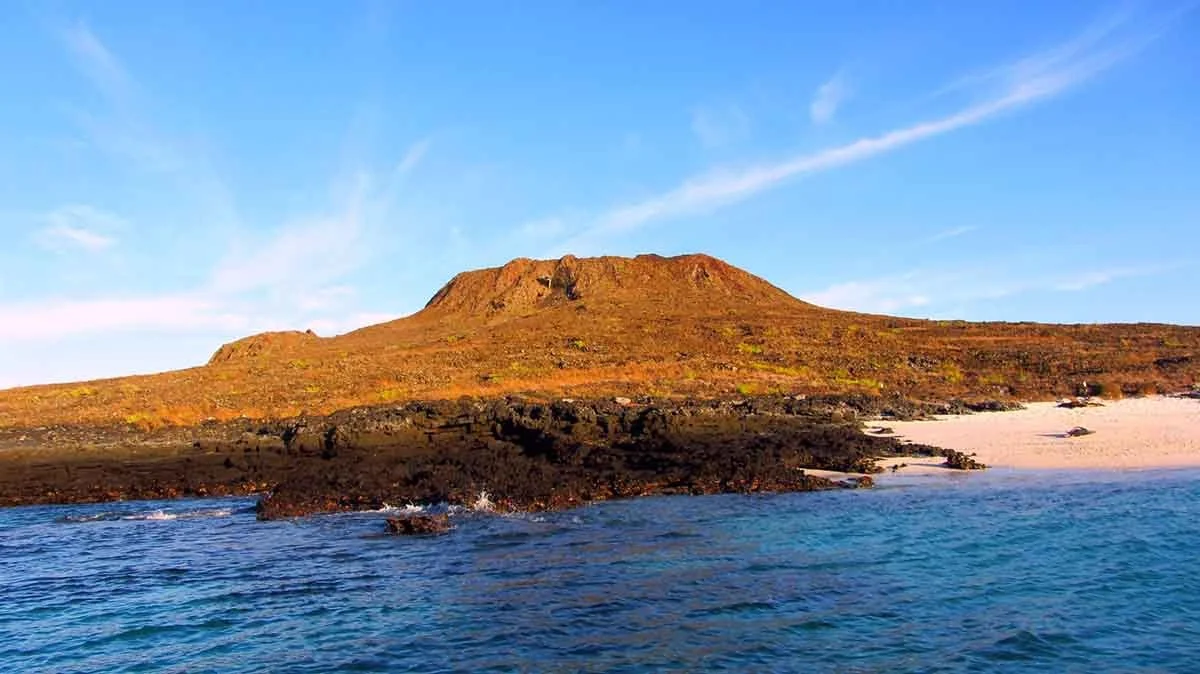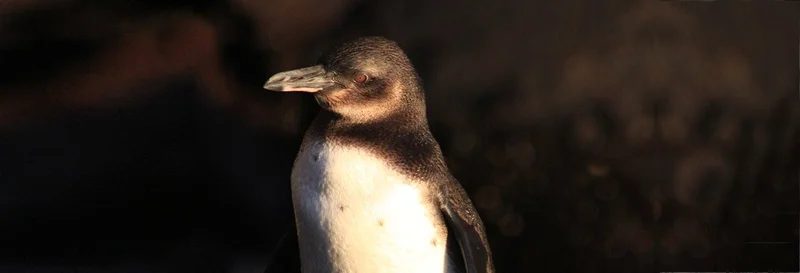Chinese Hat island
This volcanic Island has the form of a Chinese hat
One of the iconic species of Galapagos that can be spotted at Chinese Hat isle is the equatorial penguin, not just the ones you see on Animal Planet, you could think that if you have seen one, you have seen them all. But this isn’t so. The Galapagos Penguins warbling across the scenic plain of this cone shaped island is something rare and enchanting, it is endemic and the smallest of its species. This one of a kind Island is one of the most curious places in the archipelago, because of the funny shape of the Island when seen from afar. The shape is that of a Chinese hat turned upside down, and it is best approached from the North from where the shape of the oriental head ornament is best observed. Boat captains are quite skilled and will take this unique approach to ensure their guests enjoy the magic scenery.
The Chinese Hat Island is located at the southernmost part of its neighbor Santiago Island. Marine iguanas, sea lions, penguins, lava lizards and eagles are active across this small patch of land. The scenery alone makes it worth the visit to this unique isle. The adventurous eagles glide over the blue waters and make for the best scenes to watch. The island is hardly one square kilometer in size, but it is one of the most beautiful strips of land and sea ever seen together.
For those who are in wait to see sea lions, there is a cove right here and can be seen as soon as the tour boats drop anchor. If one is ready to make the wet landing and has the adventurous spirit within them, then picking up the 400-meter long trail on foot is a great way to spot the sea lions and the iguanas. One can even go swimming or snorkeling in the blue waters.
For visitors, this is one of those sites best enjoyed with the narrative of your naturalist guide. It is a popular cruise landing site on all central Island itineraries. Be sure to carry a camera to take pictures of marine iguanas, several species of birds and even the natural beauty of the cove. The really good photographer would enjoy the challenge of capturing the cone shape of the island from afar.
This cone is a formation that comes from recent volcanic activity and is a pretty interesting study from the geological point of view as well.


